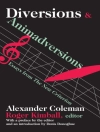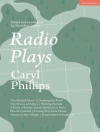Walter Pater’s ‘Imaginary Portraits’ is a collection of finely crafted sketches that delve into the inner worlds of historical and fictional figures. Through rich, impressionistic prose, Pater intertwines aestheticism with intricate psychological exploration, reflecting the Victorian fascination with art and individuality. Each portrait is imbued with a sense of the ephemeral, capturing the essence of his subjects in evocative detail, while the theme of unrealized potential permeates the narratives, challenging the boundaries between reality and imagination in the literary context of the fin de siècle. Pater, a pivotal figure in the Aesthetic Movement, was deeply influenced by his Oxford education and his engagement with Renaissance art and philosophy. His ideas on beauty and emotional experience, framed through his own keen sensibilities, propelled him to explore the depths of character and the multiplicity of human experience. ‘Imaginary Portraits’ reflects Pater’s keen interest in perception and representation, illuminating how such influences shaped his understanding of art and literature as vital components of human life. This book is highly recommended for readers seeking to engage with an exploration of the artistic psyche and the nature of identity. Pater’s eloquent prose and innovative style will appeal to anyone interested in the intersections of art, literature, and philosophy, offering profound insights into the complexities of both historical and imagined figures.
Про автора
Walter Pater, an eminent figure in the world of nineteenth-century English literature, is best known for his sophisticated prose style and his role in establishing the practice of aesthetic criticism. Born on August 4, 1839, in Stepney, London, Pater was a scholar, essayist, and critic who advocated for the appreciation of art for its own sake, a principle that became the cornerstone of the Aesthetic Movement. He was educated at King’s School, Canterbury, and later at Queen’s College, Oxford, where he would eventually become a fellow. Pater’s literary style is characterized by a rich, intricate prose that seeks to capture the subtleties and intimacies of human experience and the transient beauty of art. His collection of philosophical musings and sketches, ‘Imaginary Portraits’ (1887), is a testament to his skill in weaving fictional narrative with profound intellectual reflection, offering readers a series of character studies that delve deeply into individual psychology and aesthetics. Pater’s work often blurs the distinction between criticism and literature, as seen in his seminal collection ‘The Renaissance: Studies in Art and Poetry’ (1873), which includes his celebrated essay ‘The School of Giorgione’ and the conclusion, extolling the philosophy of ‘art for art’s sake.’ His influence extended to writers such as Oscar Wilde and James Joyce, marking him as a critical figure in the transition from Victorian morality to Modernist experimentation. Walter Pater died at age 54 on July 30, 1894, but his writings continue to inspire and provoke thought about the purpose and interpretation of art, remaining fundamental to scholarly discussions about the interrelations between art, life, and perception.












